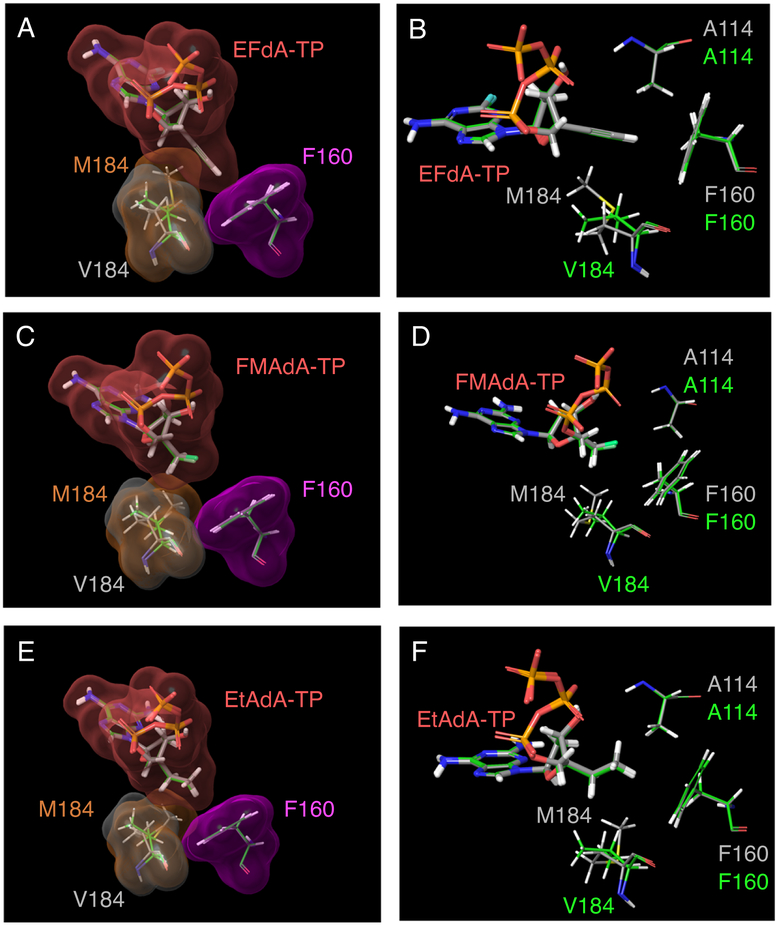Figure 6.

Superimposition of the interaction of the 4′-moiety of 4′-NRTI-TP with HIV-1 RTM184 (wild-type, shown in gray carbons) and HIV-1 RTV184 (shown in green carbons). The vdW surfaces are colored as follows: 4′-NRTI-TP, pink; F160, magenta; M184, brown; and V184, gray. (A) 4′-ethynyl moiety of EFdA-TP had predominantly interacts with F160 in both wild-type HIV-1 RT and HIV-1 RTM184V. It had also successfully maintained a strong interaction with both M184 and V184 in the active site cavity of RT. Fluorine is shown in cyan color. (C) 4′-fluoromethyl moiety of FMAdA-TP and (e) 4′-ethyl moiety of EtAdA-TP had less interaction with F160 compared to 4′-ethynyl moiety of EFdA-TP. These moieties had good interaction with M184 (wild-type), which is reduced in HIV-1 RTM184V. (B, D, F) The position of 4′-NRTI-TP with A114, F160, M184, and V184. The introduction of the V184 substitution in the active site cavity of RT did not change the conformation of other amino acid residues such as F160, A114, and D185.
